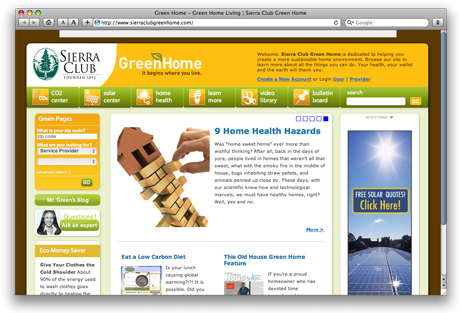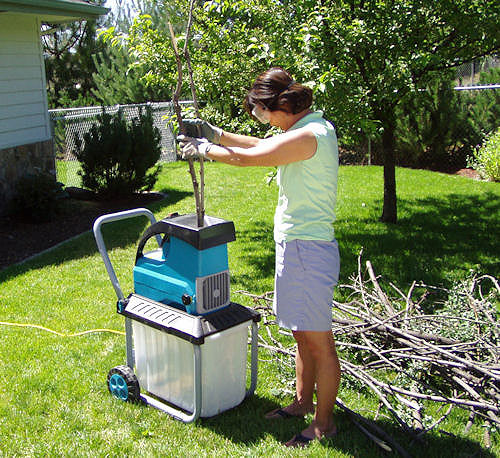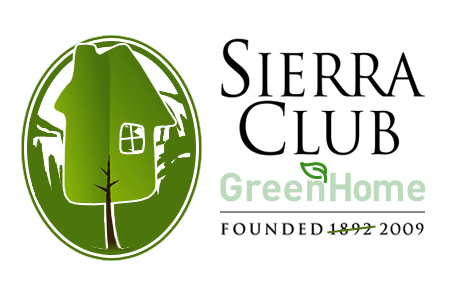 Photo illustration by Tom Twigg / GristIt’s not unusual these days for big green groups to get in bed with business, but one of the oldest and most-respected environmental organizations — the Sierra Club — is going them one better by getting into business itself.
Photo illustration by Tom Twigg / GristIt’s not unusual these days for big green groups to get in bed with business, but one of the oldest and most-respected environmental organizations — the Sierra Club — is going them one better by getting into business itself.
The San Francisco-based Sierra Club has launched a for-profit online venture called Sierra Club Green Home as a one-stop shop for information and services to green up your lifestyle and decarbonize your abode.
Sierra Club Green Home is a joint venture between the 117-year-old institution and a group of individual investors — or “donors” as they like to call themselves. “It’s the social entrepreneurship model,” says Gordon Wangers, the company’s marketing chief and one of the donor/investors. “A non-profit finds some enterprising business types who are committed to a cause but bring business savvy to a venture and have the skills and wherewithal to run it.”
Wangers thinks it’s a model for other green groups as the economic collapse zaps the fortunes of their well-heeled donors.
He says the Sierra Club holds a “very significant equity stake” in the San Diego-based startup (he wouldn’t reveal the how much) and will reap most of any profits that are generated through advertising, corporate sponsorships and a green business database.
Sierra Club Green Home was born of Sierra Club executive director Carl Pope’s frustration at trying to green his own home. Some high net-worth Sierra Club donors had a similar experience and were commiserating with Pope when Gary Rappeport, CEO of Chicago-based automotive leasing company Donlen Corp., suggested the solution was to start a business that could tap the Sierra Club’s century-old green brand. Wangers, who served on Donlen’s board and had sold his automotive marketing agency to advertising conglomerate Omnicom, subsequently joined the venture
“To duplicate the recognition and integrity of the Sierra Club brand would take many years and cost many millions of dollars in marketing,” he says. “To start right out of the gate with the Sierra Club brand is a huge advantage.” The company also starts out with a potential customer base among the Sierra Club’s 1.3 million members.
But this isn’t a licensing deal. Sierra Club experts have created an extensive library of information — on everything from “eco-friendly furniture” to geothermal heat pumps — in a smartly designed package of articles, interactive widgets and video.
For instance, start with the “Home CO2 Calculator” to get a handle on how many pounds of greenhouse gases your residence emits a year and compare your ranking to other Sierra Club Green Homers
I’m not doing too bad; my circa-1928 Berkeley house is responsible for an estimated 10,014 pounds of CO2 a year, producing 43 percent fewer emissions than the average Sierra Club Green Home user and 21 percent less carbon than houses of a similar size. But I need to do some energy efficiency retrofit work. If the numbers are accurate, my home is cranking out 23 percent more emissions than the average home of the California Sierra Club Green Home owner. (Clearly, McMansion owners have not been flocking to the site.)
The carbon calculator pinpoints weatherization as one way to cut my home’s carbon footprint. Click on the related link and up pops a page of six how-to videos as well as a plethora of information about weatherizing and tips on hiring a contractor. Punch in your zip code into the site’s Green Pages and list of local energy efficiency businesses appears. Slick.
 Sierra Club Green Home’s homepageAt the Solar Center, enter your zip code, electricity usage and local utility and a widget estimates the cost of a solar array after any applicable rebates. (Though it’s unclear if the 30 percent federal tax credit available for such systems is included in the calculation.) You then can review a list of solar installers in your area, including those vetted by a Sierra Club partner, and click on a button to request a price quote on a solar system.
Sierra Club Green Home’s homepageAt the Solar Center, enter your zip code, electricity usage and local utility and a widget estimates the cost of a solar array after any applicable rebates. (Though it’s unclear if the 30 percent federal tax credit available for such systems is included in the calculation.) You then can review a list of solar installers in your area, including those vetted by a Sierra Club partner, and click on a button to request a price quote on a solar system.
A couple of other widgets caught my eye: The Low Carbon Diet Calculator widget — from Palo Alto-based sustainable food service company Bon Appétit Management — converts your meals into “CO2 Points” to represent their carbon content. (Hint: Go for the steel-cut oats to save the planet.) Another widget, from Earth911.com, tells you the nearest place to recycle everything from batteries to motor oil.
Wangers says Sierra Club Green Home will make money primarily from the $25 monthly fee it will start charging businesses to be listed in the site’s green service provider database. Sustainability director Jennifer Schwab screens businesses to ensure they meet the site’s standards for green businesses.
While the Sierra Club Green Home execs regularly shuttle from San Diego to San Francisco to meet with their non-profit majority owners, who must approve major decisions, Schwab notes that the site is “being run as a business.”
But the B-word seems to unnerve the Sierra Club. When I ask if this is the organization’s first adventure in capitalism, I received this reply via email: “The Sierra Club is a non-profit organization and all the revenue that we bring in goes to our non-profit work, so this is not a for-profit venture for us.”
Huh? Semantics aside, that may explain why, on a site chock-a-block with data, Sierra Club Green Home’s for-profit status is one piece of information that’s hard to find.
Read past Green State columns by Todd Woody.



